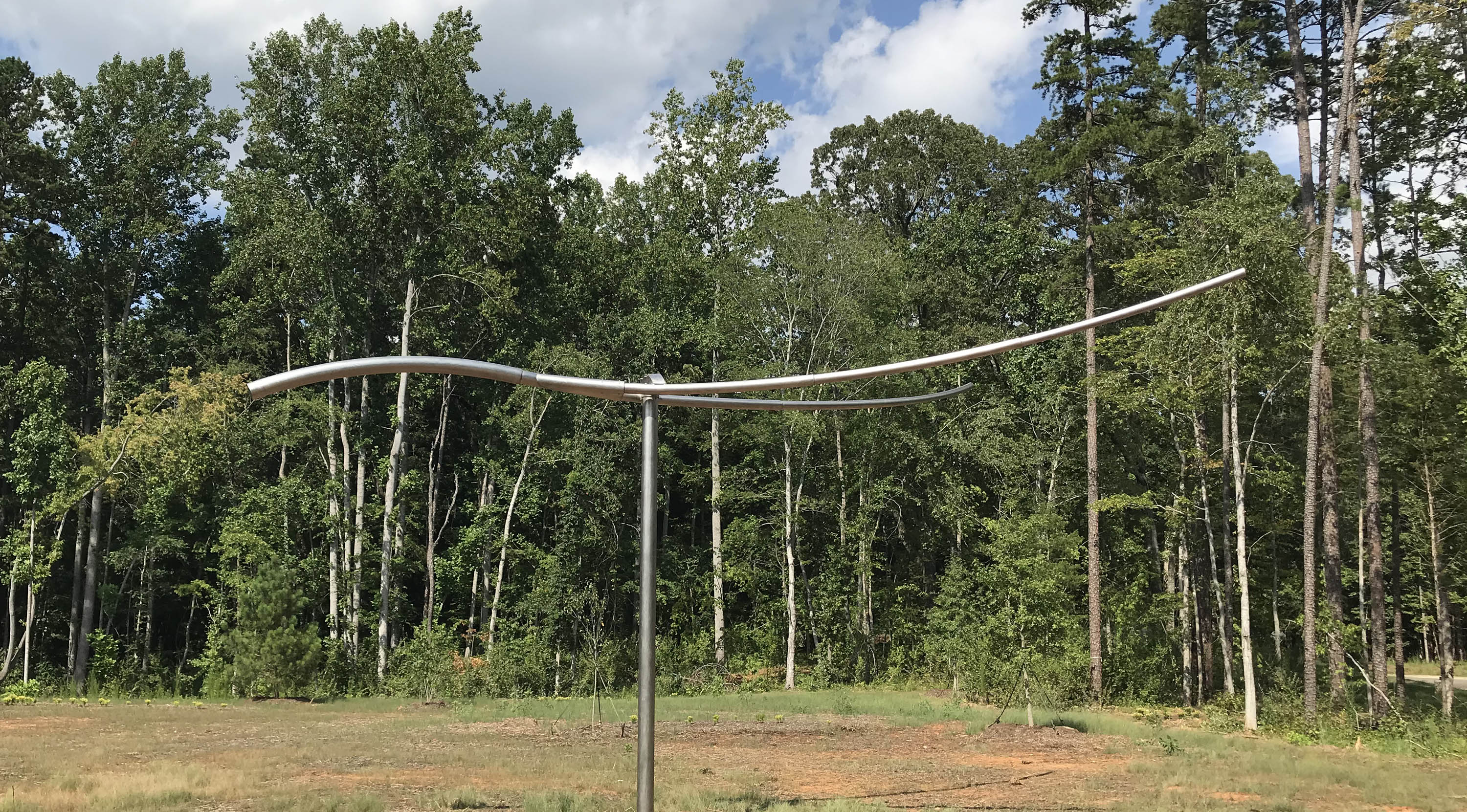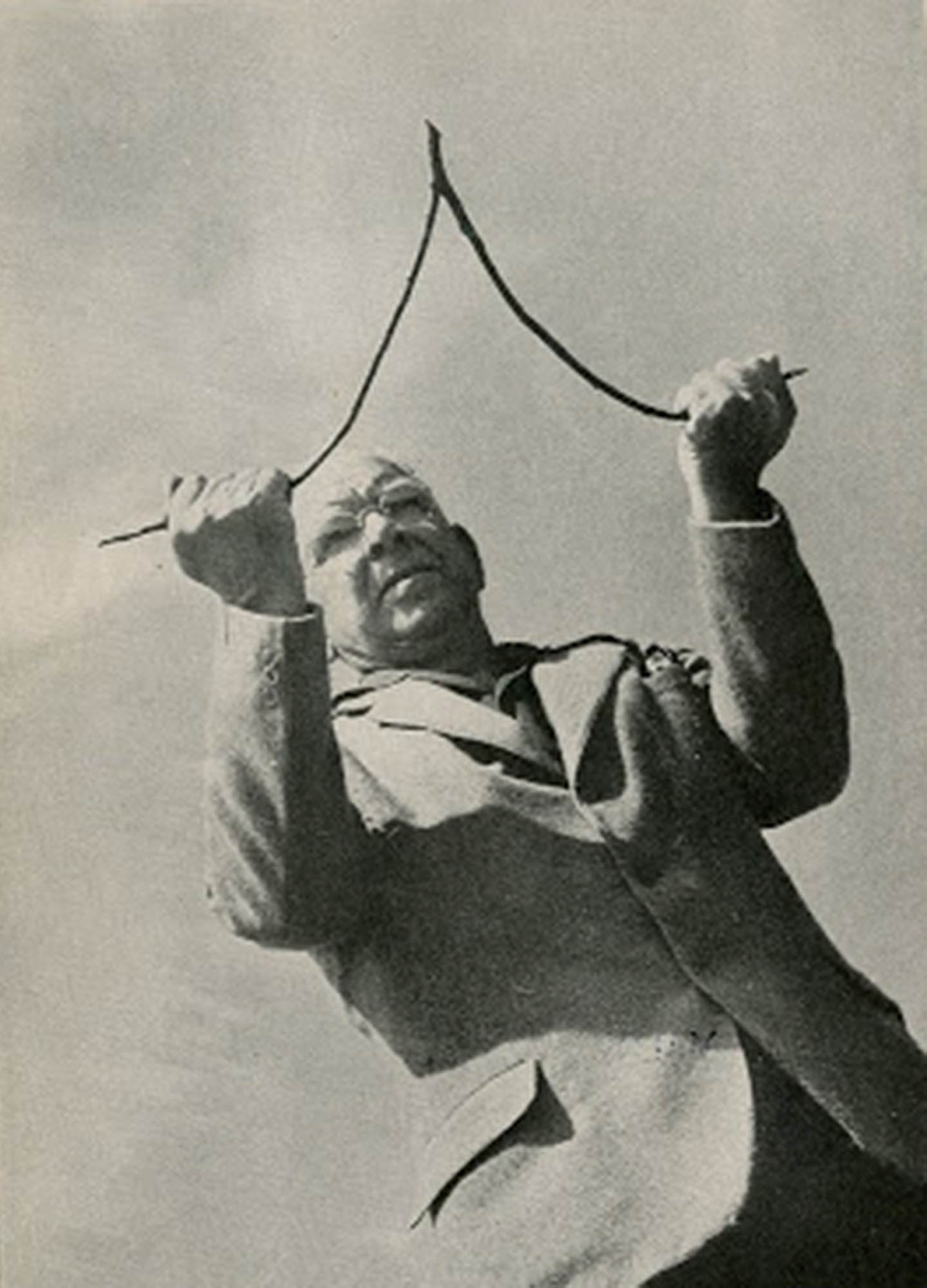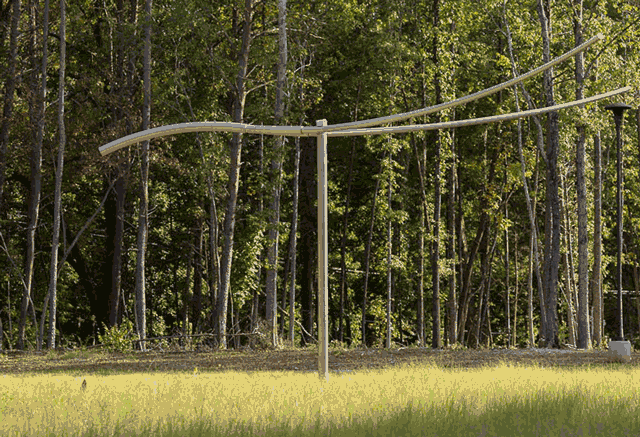

Divining is a public art sculpture commissioned by the Arts and Science Council, installed in 2020, at the Latta Nature Center and Preserve Visitors Center west of Charlotte, North Carolina.
Divining sculpturally suggests a process of investigation and discovery, an impetus to inquisitiveness for both art and science. The sculptural form is based on a dowsing or divining rod. The act of dowsing has been in practice since the 1500's. For centuries people have used low tech divining rods, typically made from branches shaped liked wishbones or the letter Y, to indicate or "divine" the location of desired hidden elements, particularly subterranean water.
People from the Mohegan Tribe were believed to be the first to show English colonizers how to use Y-shaped witch hazel sticks for dowsing, thus the origination of the term water witching. Willow saplings were another popular source for divining rods. The stainless-steel sculpture is 33 feet in length, 22 feet wide and 12 feet high. It functions as a three-axis wind vane to mimic the act of dowsing. To assess how Divining would respond to high wind events, a digital model of the sculpture was analyzed using a computer program called LS-DYNA, which simulated what its movements would be like under intense and varied conditions.
The satin finish of Divining's stainless-steel curvilinear surface reflects ambient and natural light sources. As the structure moves with the winds, it conjures a host of notions.
Albert Einstein is quoted as saying about dowsing, "I know very well that many scientists consider dowsing as they do astrology, as a type of ancient superstition. According to my conviction this is, however, unjustified. The dowsing rod is a simple instrument which shows the reaction of the human nervous system to certain factors which are unknown to us at this time."




